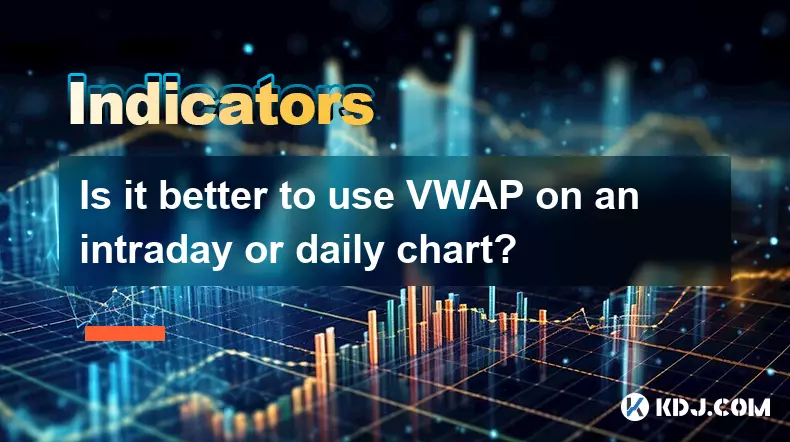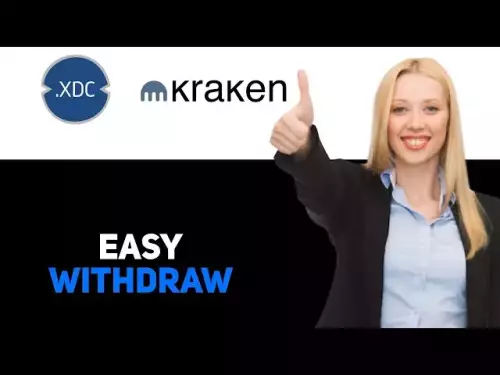-
 bitcoin
bitcoin $114684.631706 USD
-0.87% -
 ethereum
ethereum $4228.677447 USD
1.58% -
 bnb
bnb $1294.880693 USD
-1.16% -
 tether
tether $1.000819 USD
-0.02% -
 xrp
xrp $2.605138 USD
2.79% -
 solana
solana $209.908690 USD
5.89% -
 usd-coin
usd-coin $0.999903 USD
-0.03% -
 dogecoin
dogecoin $0.213423 USD
2.93% -
 tron
tron $0.322721 USD
-0.10% -
 cardano
cardano $0.727247 USD
3.66% -
 hyperliquid
hyperliquid $42.339456 USD
6.05% -
 chainlink
chainlink $19.910811 USD
5.16% -
 ethena-usde
ethena-usde $1.000557 USD
0.00% -
 stellar
stellar $0.349734 USD
2.69% -
 bitcoin-cash
bitcoin-cash $543.848687 USD
-0.21%
How to backtest a trading strategy based on the KDJ?
The KDJ indicator helps crypto traders identify reversals by analyzing price momentum, but should be combined with other tools and rigorous backtesting to improve accuracy and avoid false signals in volatile markets.
Oct 12, 2025 at 03:55 am

Understanding the KDJ Indicator in Crypto Trading
1. The KDJ indicator, also known as the Stochastic Oscillator with a J-line adjustment, is widely used in cryptocurrency trading to identify overbought and oversold conditions. It consists of three lines: %K (fast stochastic), %D (slow stochastic), and %J (a derived momentum line). These values are calculated based on recent price highs, lows, and closing prices over a defined period, typically 9 or 14 candles.
2. In the volatile environment of the crypto market, the KDJ can help traders spot potential reversal points. When the %K line crosses above the %D line in the oversold region (usually below 20), it may signal a bullish entry. Conversely, when %K crosses below %D in the overbought zone (above 80), it could indicate a bearish opportunity.
3. The J-line adds sensitivity by measuring the divergence between %K and %D. A J value exceeding 100 suggests extreme bullish momentum, while a value below 0 indicates strong bearish pressure. Traders often use these extremes as confirmation signals alongside other technical tools.
4. Because cryptocurrencies exhibit high volatility and frequent false signals, relying solely on KDJ can lead to losses. Proper backtesting allows traders to assess how well the KDJ performs under different market regimes—ranging from bull runs to consolidation phases—before deploying capital.
Steps to Backtest a KDJ-Based Strategy
1. Define clear entry and exit rules based on KDJ crossovers and threshold levels. For example, enter long when %K crosses above %D and both are below 20; exit when %K crosses below %D or the J-line exceeds 100. Each rule must be quantifiable to ensure consistency during testing.
2. Select historical price data from reliable sources such as Binance, Bybit, or Kraken APIs. Ensure the dataset includes OHLC (Open, High, Low, Close) values for the chosen time frame—commonly 1-hour or 4-hour candles for intraday strategies. Data should span multiple market cycles to capture diverse conditions.
3. Use backtesting platforms like TradingView’s Pine Script, Python with libraries such as Pandas and NumPy, or specialized software like Backtrader. Implement the KDJ calculation using the standard formula: %K = (Current Close - Lowest Low) / (Highest High - Lowest Low) * 100, then apply smoothing for %D and derive %J = 3×%K - 2×%D.
4. Run the strategy across the selected dataset and record all trades generated. Track key metrics including win rate, profit factor, maximum drawdown, and Sharpe ratio. Adjust parameters like lookback period or overbought/oversold thresholds only after evaluating performance across multiple assets and timeframes.
5. Validate results using out-of-sample data or walk-forward analysis. This prevents overfitting, where a strategy appears profitable due to curve-fitting but fails in live markets. Consistent performance across different periods increases confidence in the strategy’s robustness.
Risks and Limitations of KDJ Backtesting
1. Historical data does not guarantee future outcomes, especially in crypto markets influenced by sudden news events, regulatory changes, or macroeconomic shifts. A strategy that worked during a bull market may fail during a prolonged downtrend or sideways movement.
2. Slippage and transaction costs are often underestimated in backtests. On decentralized exchanges or low-liquidity pairs, executing large orders at expected prices can be difficult, eroding profits. Include realistic fee models and slippage assumptions in simulations.
3. Look-ahead bias can occur if future data leaks into the test, such as using final closing prices before they were available. Ensure calculations are strictly based on information accessible at each point in time.
4. Market structure evolves. New tokens, exchange-specific behaviors, and algorithmic trading activity can alter price dynamics. A strategy validated on Bitcoin may not perform equally well on altcoins without re-calibration.
Frequently Asked Questions
What is the ideal lookback period for the KDJ in crypto trading?The most commonly used setting is 9 periods, particularly on 1-hour or 4-hour charts. However, shorter periods increase sensitivity and generate more signals, while longer periods smooth the lines but reduce responsiveness. Optimal settings depend on the asset and timeframe, requiring individual testing.
Can the KDJ be combined with other indicators for better accuracy?Yes, many traders combine KDJ with moving averages, RSI, or MACD to filter false signals. For instance, only taking KDJ buy signals when price is above a 50-period EMA can improve reliability. Volume-based confirmations are also effective in distinguishing genuine breakouts from noise.
How do I account for weekend price gaps in crypto backtesting?Cryptocurrency markets operate 24/7, minimizing traditional weekend gaps. However, periods of low liquidity—such as holidays or major event announcements—can cause sharp moves. Simulate these scenarios by including volatility filters or adjusting position sizing during low-volume intervals.
Is it possible to automate a KDJ-based strategy?Absolutely. Once a KDJ strategy is thoroughly backtested and validated, it can be automated using bots on platforms like 3Commas, Gunbot, or custom scripts via exchange APIs. Automation ensures disciplined execution and removes emotional interference, though continuous monitoring remains essential.
Disclaimer:info@kdj.com
The information provided is not trading advice. kdj.com does not assume any responsibility for any investments made based on the information provided in this article. Cryptocurrencies are highly volatile and it is highly recommended that you invest with caution after thorough research!
If you believe that the content used on this website infringes your copyright, please contact us immediately (info@kdj.com) and we will delete it promptly.
- XRP Price Prediction: Weekend Rollercoaster or Rally?
- 2025-10-12 08:45:16
- Bittensor (TAO): Super Bullish Signals Point to Potential 2x Rally
- 2025-10-11 10:25:12
- Silver Price Correction: Navigating the Dip & Identifying Key SEO Keywords
- 2025-10-11 10:25:12
- Decoding Crypto Trends: Bittensor's Bull Run, Cardano's Dip, and LivLive's Presale Buzz in 'Uptober 2025'
- 2025-10-12 08:45:16
- MoonBull: The Crypto Meme Coin Promising 1000x Gains?
- 2025-10-11 10:30:01
- Crypto Payroll Revolution: Stablecoins, Altcoins, and the Future of Salary Payments
- 2025-10-11 10:30:01
Related knowledge

What's the main difference between VWAP and TWAP?
Oct 12,2025 at 11:54am
Understanding VWAP and Its Role in Crypto Trading1. Volume Weighted Average Price (VWAP) is a trading benchmark that calculates the average price of a...

How do you identify exhaustion moves using VWAP and its bands?
Oct 12,2025 at 08:00am
Understanding the Role of Decentralized Exchanges in Crypto Trading1. Decentralized exchanges (DEXs) operate without a central authority, allowing use...

Is it better to use VWAP on an intraday or daily chart?
Oct 15,2025 at 02:01am
Intraday Trading and the Role of VWAP1. Intraday traders frequently rely on VWAP (Volume Weighted Average Price) as a dynamic benchmark for assessing ...

How do you use VWAP to scale in and out of positions?
Oct 14,2025 at 02:19am
Understanding VWAP as a Dynamic Benchmark1. The Volume Weighted Average Price (VWAP) is not just an indicator—it functions as a dynamic benchmark that...

What are the main advantages of using VWAP over EMA?
Oct 11,2025 at 02:18am
Main Advantages of Using VWAP Over EMA1. Volume-Weighted Average Price (VWAP) incorporates trading volume into its calculation, offering a more accura...

How do you use VWAP on different chart types like Heikin Ashi?
Oct 11,2025 at 05:01pm
Understanding VWAP in the Context of Heikin Ashi Charts1. The Volume Weighted Average Price (VWAP) is a powerful analytical tool commonly used by trad...

What's the main difference between VWAP and TWAP?
Oct 12,2025 at 11:54am
Understanding VWAP and Its Role in Crypto Trading1. Volume Weighted Average Price (VWAP) is a trading benchmark that calculates the average price of a...

How do you identify exhaustion moves using VWAP and its bands?
Oct 12,2025 at 08:00am
Understanding the Role of Decentralized Exchanges in Crypto Trading1. Decentralized exchanges (DEXs) operate without a central authority, allowing use...

Is it better to use VWAP on an intraday or daily chart?
Oct 15,2025 at 02:01am
Intraday Trading and the Role of VWAP1. Intraday traders frequently rely on VWAP (Volume Weighted Average Price) as a dynamic benchmark for assessing ...

How do you use VWAP to scale in and out of positions?
Oct 14,2025 at 02:19am
Understanding VWAP as a Dynamic Benchmark1. The Volume Weighted Average Price (VWAP) is not just an indicator—it functions as a dynamic benchmark that...

What are the main advantages of using VWAP over EMA?
Oct 11,2025 at 02:18am
Main Advantages of Using VWAP Over EMA1. Volume-Weighted Average Price (VWAP) incorporates trading volume into its calculation, offering a more accura...

How do you use VWAP on different chart types like Heikin Ashi?
Oct 11,2025 at 05:01pm
Understanding VWAP in the Context of Heikin Ashi Charts1. The Volume Weighted Average Price (VWAP) is a powerful analytical tool commonly used by trad...
See all articles

























![[4K 60fps] Prisma by novichokk (1 Coin) [4K 60fps] Prisma by novichokk (1 Coin)](/uploads/2025/10/14/cryptocurrencies-news/videos/k-fps-prisma-novichokk-coin/68ee49804ba00_image_500_375.webp)
















































